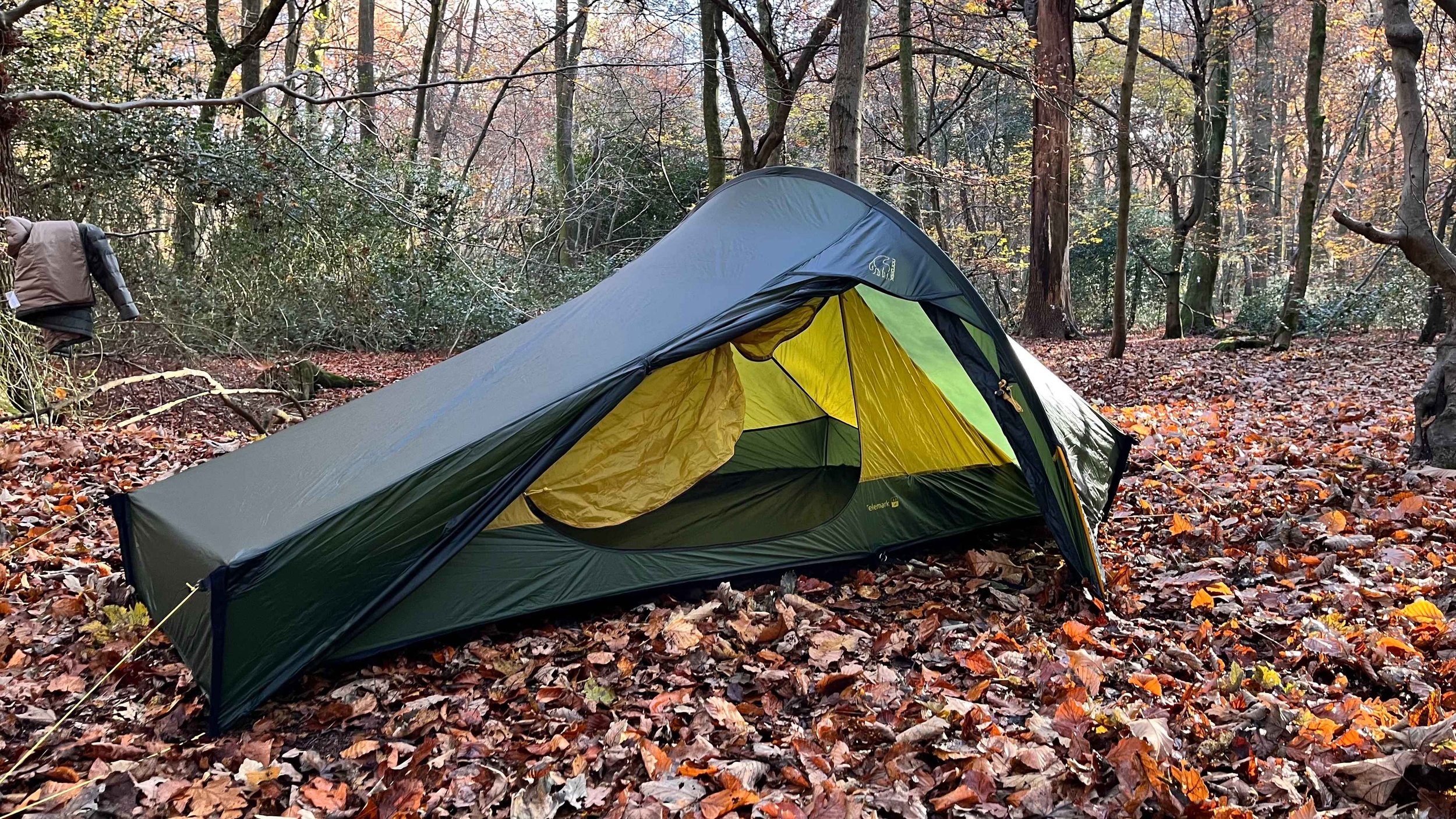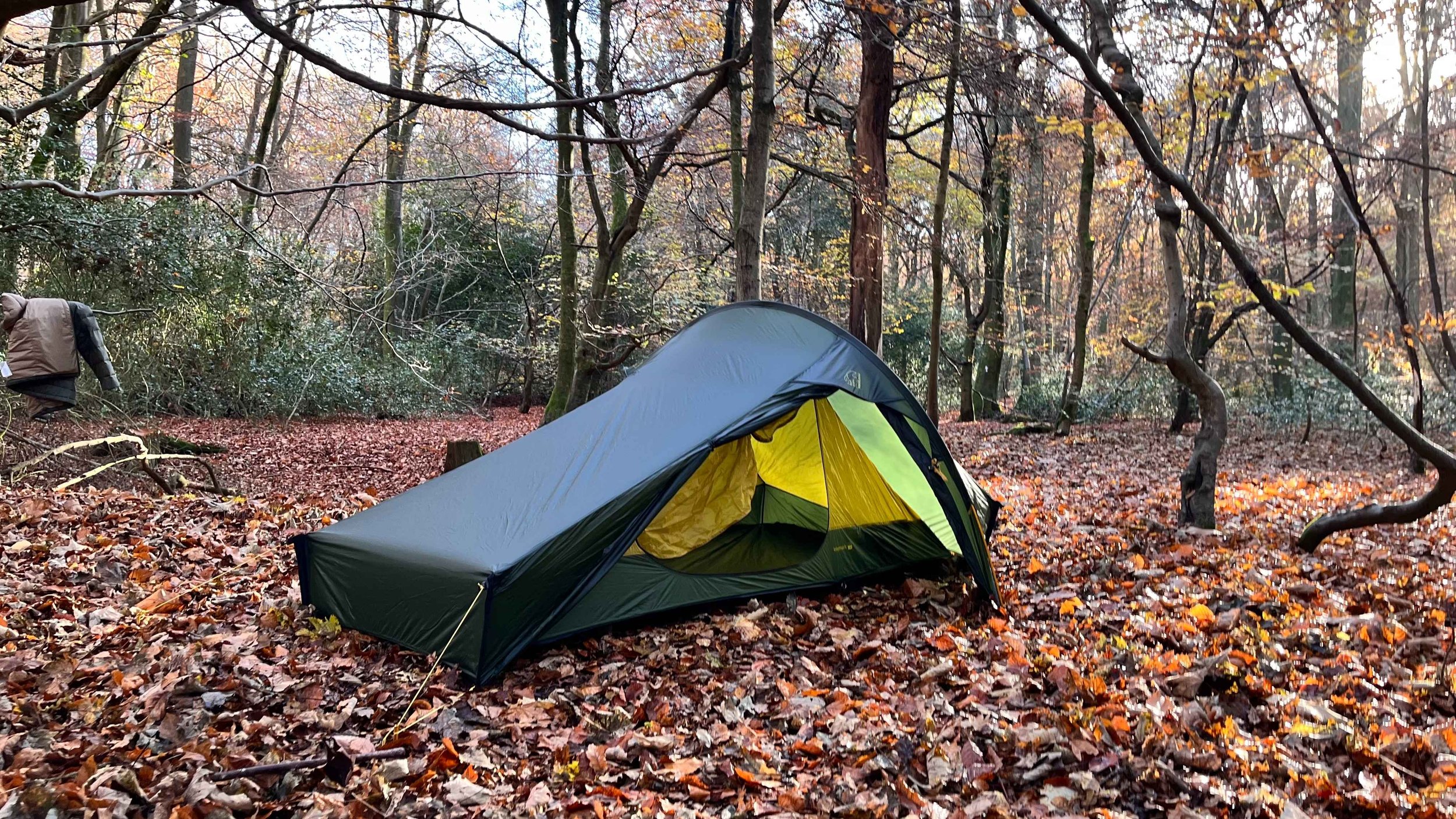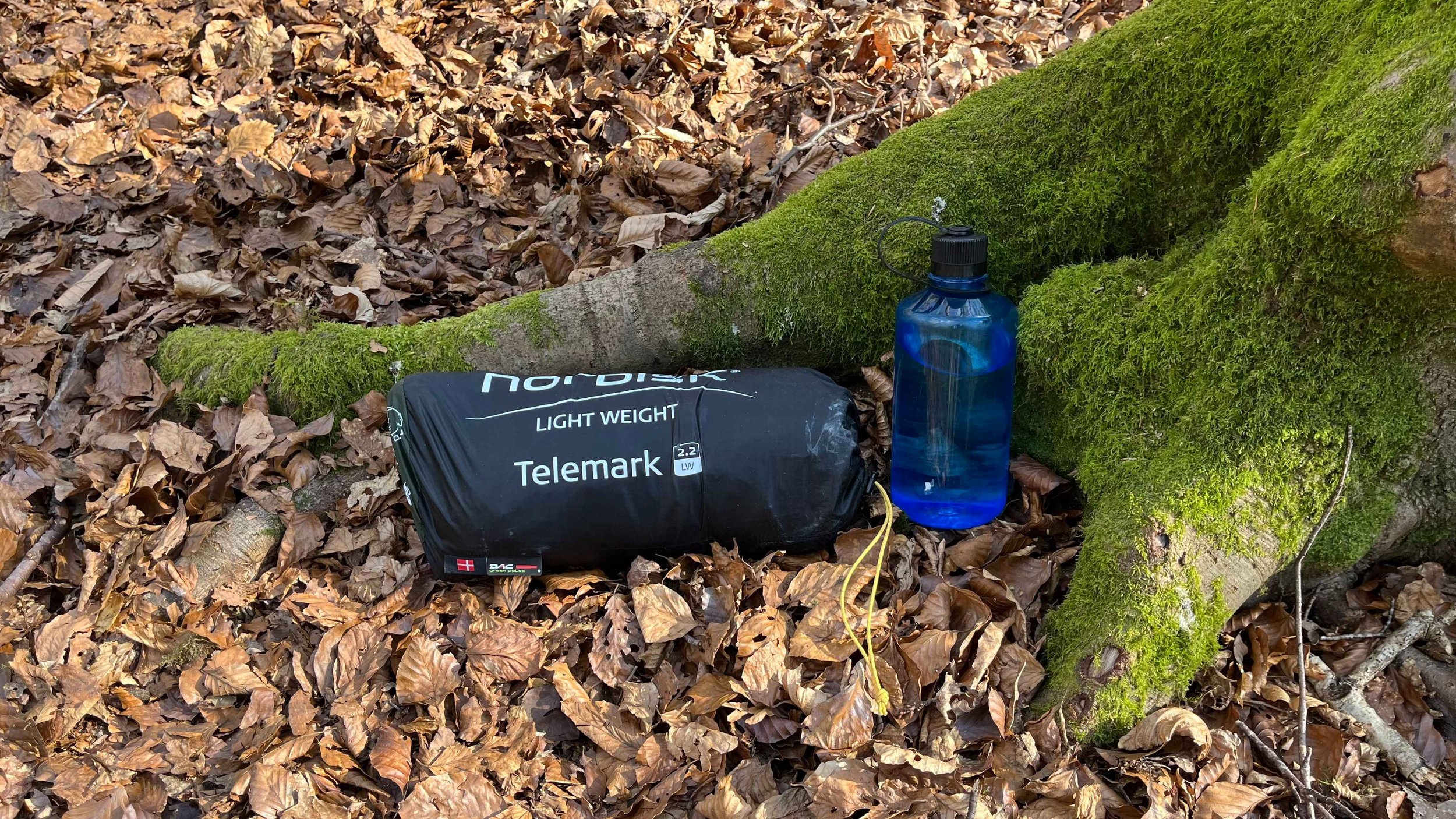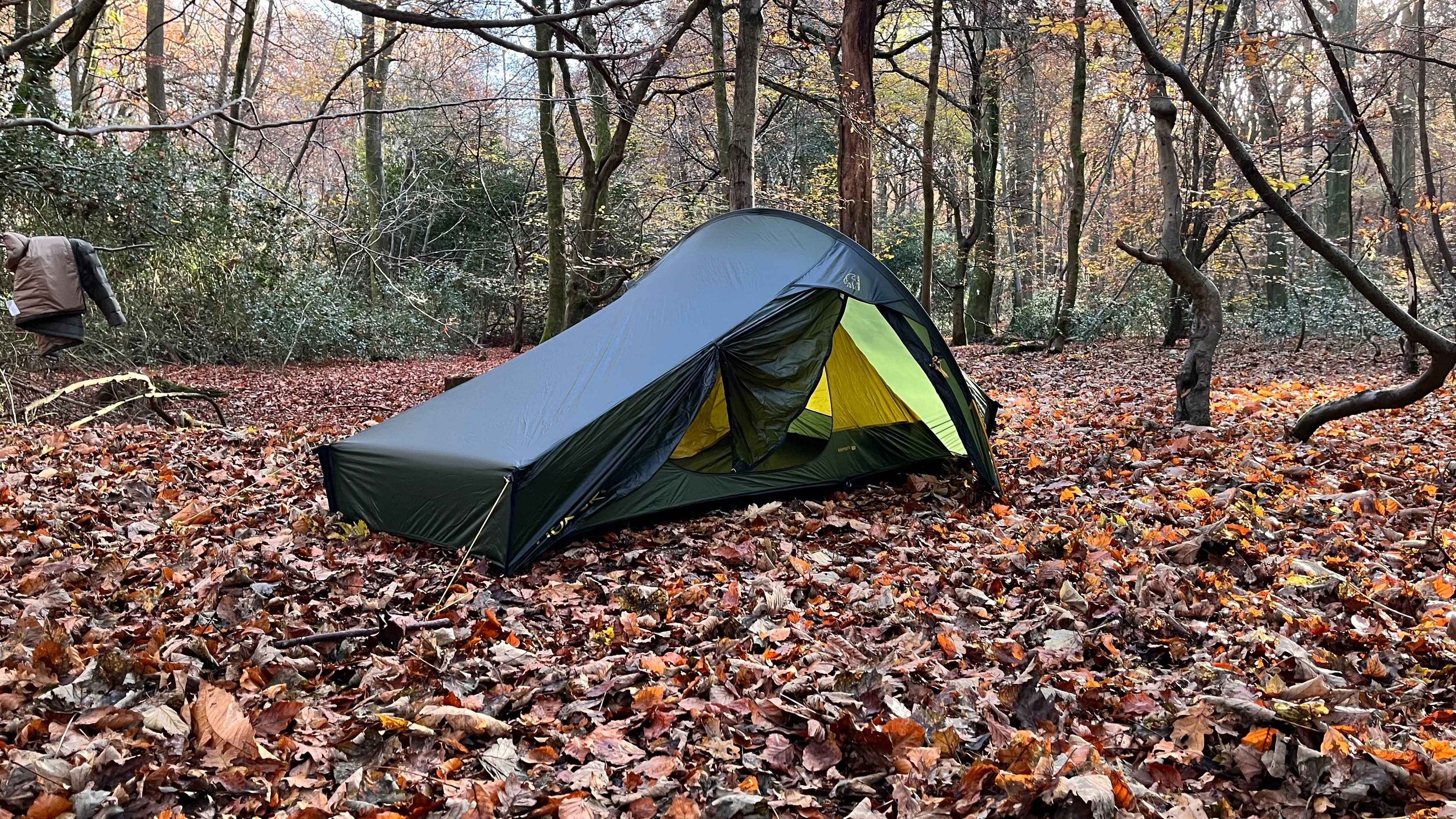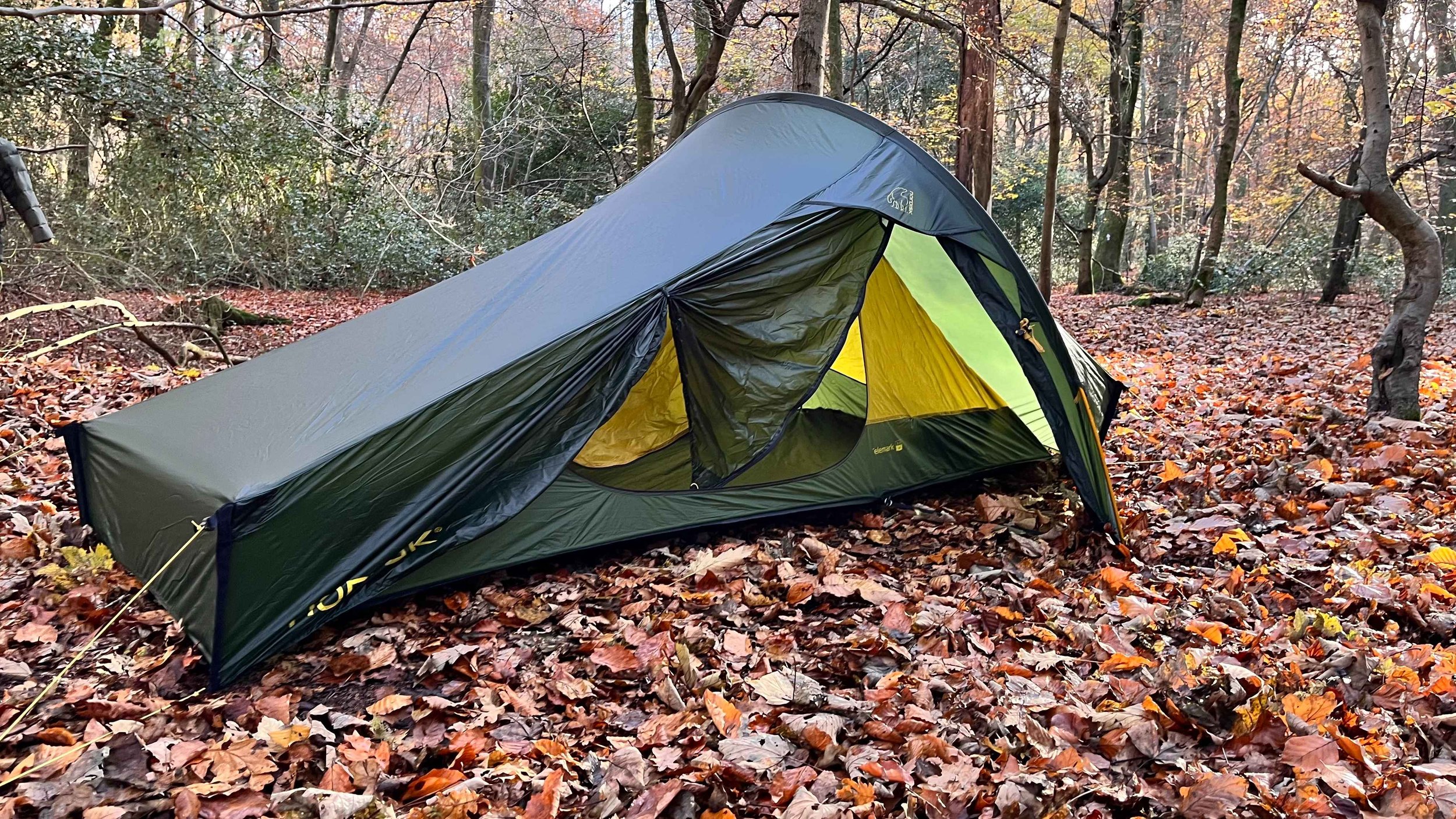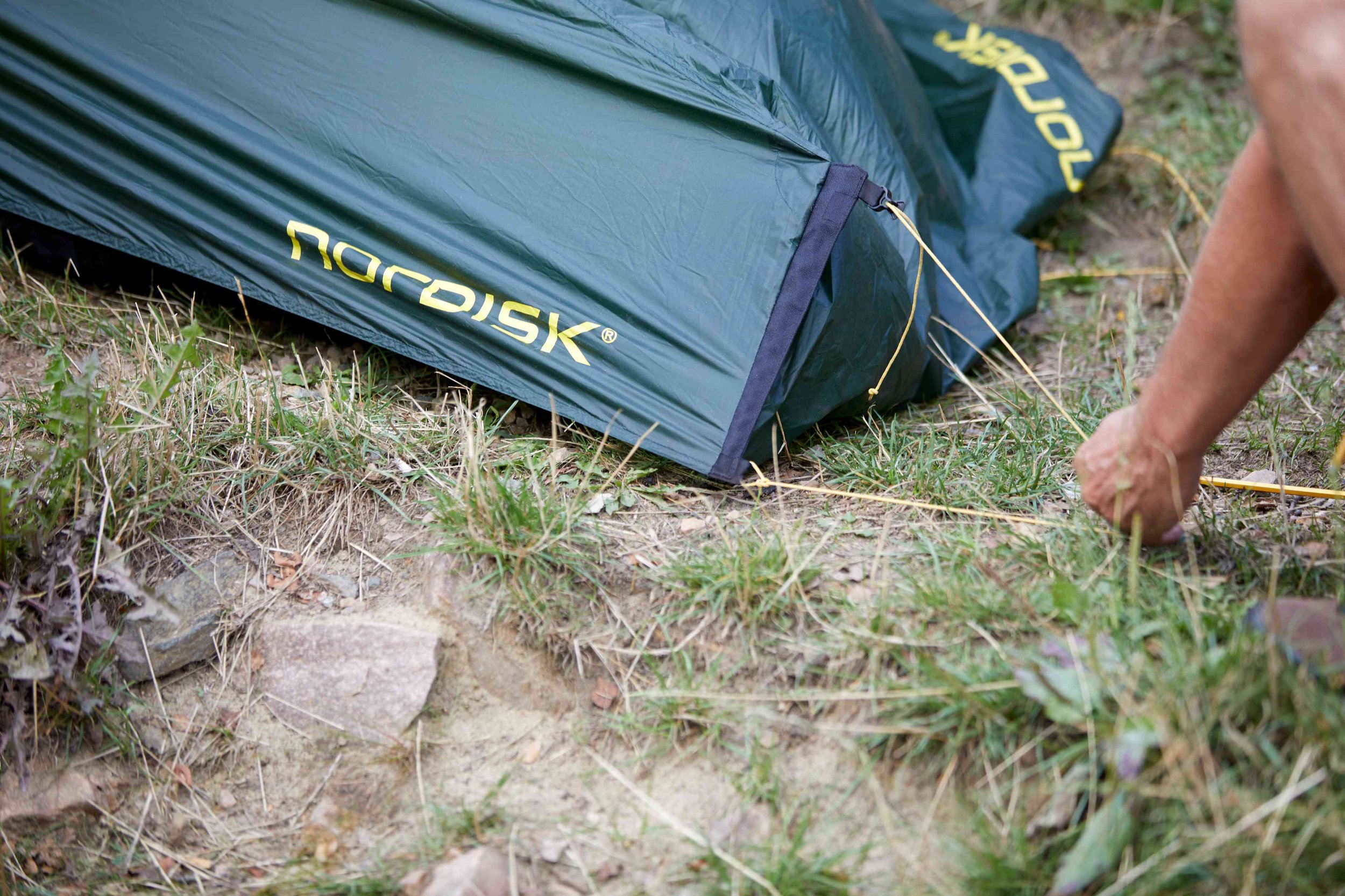Nordisk Telemark 2.2 LW review: A 4-season shelter that’s nearly perfect
An ultralight marvel for four-season backpacking, the Nordisk Telemark 2.2 LW tent offers a near-perfect blend of weight, durability, and space. While pricey, its impressive performance across a variety of conditions makes it a worthy investment for serious adventurers.
Nordisk Telemark 2.2 LW
Ideal for: 4-season backpacking, bikepacking, and even fastpacking
Not suitable for: Family camping, budget camping
Weighing just 1024 grams and packing down to the size of a small rugby ball, the Nordisk Telemark 2.2 LW tent is an ultralight, four-season shelter that is good everywhere. Dual entrances, a magnetic door closure, and a surprisingly spacious interior make it a standout choice for backpackers, bikepackers and ultra-runners alike. And eventhough it’s pricey — and we think it might be one of the (if not the) best all-around four-season shelters for use on any adventure and in any climate you will ever encounter in the UK. It just comes at a relatively large price.
The Good
Very lightweight
Reliable and durable
Roomy and comfortable
Exceedingly easy to pitch and pack away
Tiny pack size
Hyper-considered design gives you lots of features
Interior can increase and decrease in size depending on gear/number of occupants
Performs excellently in all conditions
The Bad
Expensive
Image credit: Nordisk
Nordisk Telemark 2.2 LW tent review
Founded in Denmark over a century ago, Nordisk has built a reputation for creating premium outdoor gear that balances ultralight design with genuine all-weather performance. Known for their technical down sleeping bags and featherweight tents, Nordisk is a brand that’s serious about making life easier for adventurers who count every gram. Their approach is clear: cut weight without cutting corners. This commitment is evident in the Nordisk Telemark 2.2 LW tent, a four-season shelter that tips the scales at a mere 1024 grams yet performs like a real heavyweight in terms of livability and durability.
The Telemark 2.2 LW is part of Nordisk’s range of ultralight shelters designed for fastpackers, bikepackers, and anyone who spends more time moving than pitching camp. What sets it apart is its ability to handle a genuine four-season beating while maintaining a pack size comparable to a thin down jacket. Whether you’re wild camping in the Scottish Highlands, tackling the Pennine Way, or fastpacking across Snowdonia, the Telemark’s versatility makes it a compelling choice.
Unlike many ultralight tents that feel cramped and fragile, the Telemark surprises with a spacious interior and a robust build. The single-pole tunnel design maximises internal space without adding weight, while the 8,000 mm hydrostatic head groundsheet ensures that even the soggiest British campsites won’t leave you waking up damp. It’s a tent that promises the best of both worlds: the weight of a summer tarp and the weatherproofing of a winter shelter.
In terms of comparable options, the Fjallraven Abisko Lite 1 (£600) is perhaps its closest rival, offering similar four-season capabilities but at a significantly higher weight (1.6 kg) and a more cramped vestibule. The Hilleberg Akto (£779.99) has long been considered a gold standard for solo tents but weighs in at 1.5 kg and lacks the Telemark’s more modern features, like dual entrances and magnetic door closures. Meanwhile, the Nortent Vern 1 (£565) is built to survive the harshest conditions but at 2.5 kg, it’s more than twice the weight of the Telemark and feels bulky for fastpacking. The upshot is clear: while the Telemark’s price might make you wince, its weight-to-performance ratio is hard to beat.
Image credit: Nordisk
Our experience using the Telemark 2.2 LW from Nordisk
To give the Nordisk Telemark 2.2 LW a proper workout, we took it on a series of wild camping trips across the UK, each chosen to test a different aspect of its performance. Our first stop was the Bannau Brycheiniog National Park, where we faced everything from steady rain to gusts topping 30 mph. Pitched on the exposed summit of Fan y Big, the Telemark proved remarkably stable, with the single-pole tunnel design deflecting wind efficiently without turning into a sail. Even more impressive was how dry it stayed inside—the 8,000 mm hydrostatic head groundsheet meant that even saturated ground couldn’t force water through.
Next, we took it to Bannau Brycheiniog National Park in the depths of winter, with overnight lows hitting -7°C. The Telemark’s compact design helped trap heat efficiently, and while there was some condensation in the morning, it was manageable given the conditions. A couple of nights on Dartmoor’s Yes Tor rounded off the test, where heavy rain and swirling winds made for a challenging pitch. Here, the Telemark’s ease of setup was a lifesaver—its single-pole design meant we had it pitched in under five minutes, even as the wind tried its best to turn it into a kite.
Throughout all of this, we kept a close eye on three things: how easy it was to pitch and pack, how well it handled the elements, and how livable it was over multiple nights. The verdict? It excelled across the board, combining ultralight convenience with a level of comfort and protection that’s rare in shelters this light.
Performance and features
The first thing that strikes you about the Nordisk Telemark 2.2 LW tent is how deceptively simple it appears at first glance. This is, of course, by design. Nordisk has a knack for making gear that looks unfussy yet performs with a sophistication that belies its minimalist appearance. In the case of the Telemark 2.2 LW, it’s all about making the most of every gram. At just 1024 grams, this tent is one of the lightest four-season options available, which feels like sorcery when you consider its robustness.
Image credit: Nordisk
Weight and pack size
The weight of the Telemark is perhaps its most talked-about feature—and for good reason. When you’re trekking for miles, every gram counts, and the difference between a 1 kg tent and a 2 kg tent is night and day. The Telemark 2.2 LW’s single-pole tunnel design is a significant factor here. By eliminating the need for multiple poles and complicated hub systems, Nordisk has shaved off weight while maintaining a stable structure. The tent packs down to a size comparable to a winter down jacket or a small rugby ball, making it ideal for fastpackers and anyone who doesn’t want their tent to dominate their pack space.
Despite its compact pack size, the Telemark manages to feel spacious once pitched. For one person plus kit, the interior space is almost luxurious. There’s enough headroom to sit up comfortably, which is a blessing when you’re stuck waiting out a storm. For two people, it’s a bit more of a squeeze, but still manageable if you’re both efficient with gear storage.
Interior space and vestibule design
The interior of the Telemark 2.2 LW is a masterclass in efficient design. The single-pole tunnel construction maximises usable space, avoiding the claustrophobic feel that some ultralight tents suffer from. The floor plan is just wide enough to fit two sleeping mats side by side, though it’s clear that this tent is at its best as a roomy solo shelter. The extendable vestibule is a clever feature that adds versatility. In its smallest configuration, it’s perfect for stashing boots and a small pack. But by sacrificing a bit of inner tent space, you can extend the vestibule to fit larger packs or even cook up a grand meal.
One small niggle is that the vestibule, while useful, can feel a bit tight if you’re using the tent as a two-person shelter. There’s enough room to keep gear dry but not quite enough to rummage around comfortably without letting the rain in. That said, the dual-door setup helps alleviate this by providing more access options. Having two entrances is a rare luxury in an ultralight tent and makes a noticeable difference in both ventilation and convenience. No more awkwardly climbing over a tent mate for a midnight bathroom run or faffing about with damp gear.
Image credit: Nordisk
Weather protection
When it comes to keeping the weather out, the Telemark 2.2 LW is nothing short of impressive. The 8,000 mm hydrostatic head groundsheet is a standout feature. Many ultralight tents cut corners on waterproofing to keep weight down, but Nordisk has wisely opted for a more robust groundsheet. In our testing, the tent held up to some truly grim British conditions—from boggy Dartmoor hillsides to the rain-soaked summits of the Brecon Beacons—and not a drop of water made it through.
The flysheet is equally impressive, with a silicone-coated ripstop nylon that strikes a balance between durability and low weight. The coating sheds water effortlessly, with raindrops beading and rolling off instead of soaking in—a crucial feature when you’re packing up in a hurry. The fly also extends low to the ground, reducing the chances of splash-back in heavy rain. Crucially, however, the fly sheet doesn’t go all the way to the ground (unlike classic four-season shelters), in order to maximise airflow as much as possible while still keeping you protected.
The Nordisk Telemark 2.2 LW in the wind
Considering its weight, the Telemark’s wind resistance is remarkable. Tunnel tents are known for their ability to deflect wind, and the Telemark is no exception. In gusts of up to 30 mph on Dartmoor, the tent remained stable with just the main guy lines pegged out. The multiple guy-out points offer the flexibility to pitch for anything from mild conditions to full-on storms, and the single-pole design flexes just enough to absorb gusts without transferring the force to the stakes.
The low profile of the tent also helps here, minimising the surface area exposed to the wind. It’s worth noting that the tent is slightly higher than some of its competitors, which can lead to a bit of rattling in stronger gusts. However, with all guy lines deployed, the Telemark feels secure enough to ride out most storms comfortably — just avoid exposed mountain summits in the worst of it.
Image credit: Nordisk
Ventilation
Ventilation is often the Achilles’ heel of ultralight tents, and the Telemark is no exception. With just one vent, airflow can feel limited, particularly on warmer nights. The raised flysheet does help, allowing air to circulate underneath, but it’s not a perfect solution. That said, the dual-door design goes some way towards mitigating this issue. Cracking open both doors creates a decent cross-breeze, but leaves you exposed to rain.
On the storm flaps themselves, small but clever magnets help keep the elements ou. They snap the doors shut with satisfying precision, keeping the fly tight and the rain out. It’s a feature that feels almost luxurious — especially when you’re pitching in the wet and every second counts, and one we’d love to see on other lines.
Ease of pitching and packing
One of the Telemark’s greatest strengths is how easy it is to pitch. The single-pole design makes setup practically foolproof, even in poor light or with numb fingers. With a bit of practice, you can go from unpacking to fully pitched in under four minutes. Packing it away is just as simple, thanks to the internal stuff sack that’s sewn into the tent. This little detail eliminates the classic “where’s the stuff sack?” panic when the wind picks up.
Durability
Durability is another area where the Telemark exceeds expectations. Despite its ultralight credentials, the 20D ripstop nylon used for the fly and floor is reassuringly tough. In our testing, it shrugged off branches, rocks, and even the occasional misstep with hiking poles. While it’s not as bombproof as the Hilleberg Akto or the Nortent Vern 1, it’s more than adequate for UK conditions.
Extra features
One last feature worth mentioning is what we call ‘awning-mode’. This smart little design tweak means that you can take out the four corner poles to form a telescopic pole that you can use to prop up the door. Honestly, though, as much as we wanted to love this, we feel like this is a bit of a misstep in an otherwise brilliant design. While clever, it feels like Nordisk were looking to add even more versatility to an already hyper-versatile shelter — and we think Nordisk missed the mark with this one. When you remove the corner poles and raise the awning, the result is a saggy, flapping mess that’s more hassle than it’s worth and certainly not something you’d want to sleep in. In practice, using a walking pole to prop open the door is a much more effective way of creating a sheltered cooking area.
Nordisk Telemark 2.2 LW tent FAQs
-
The raised flysheet and dual doors help with ventilation, but the single vent means it can get warm on still nights.
-
Exceptionally well. The robust flysheet and groundsheet handle snow and rain easily, and the compact design traps heat efficiently.
-
Its tunnel design and multiple guy-out points offer stability in most conditions, though pitching sensibly is key.
-
Very easy. The single-pole design makes setup straightforward even in poor weather.
-
If you value low weight and high performance, absolutely. It’s one of the most versatile four-season tents available.
Conclusion
The Nordisk Telemark 2.2 LW isn’t just an ultralight tent—it’s a tent that redefines what ultralight can mean. It’s light enough for fastpacking and bikepacking, tough enough for genuine four-season use, and packed with thoughtful features that make life on the trail easier. Yes, it’s expensive, but when you consider that it could feasibly replace both a summer and winter tent in your collection, the price starts to make a lot more sense. For anyone serious about spending time in the outdoors, this is as close to a do-it-all tent as we’ve ever tested.
